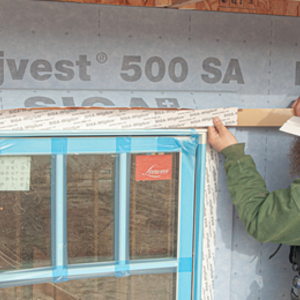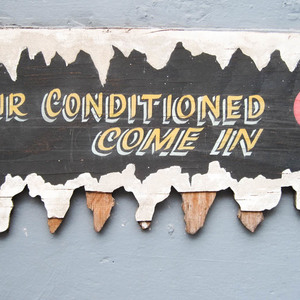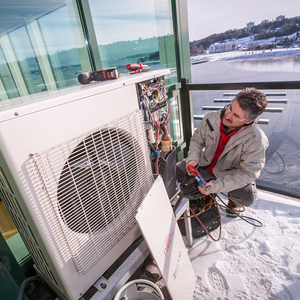
It has taken years for building scientists and progressive builders to get past the “buildings need to breathe” nonsense and replace that with a more helpful mantra: “Build Tight, Ventilate Right.”
Leaky buildings invite problems, including unnecessary energy consumption, drafts, and the potential for moisture accumulation inside walls and roofs. Houses with low rates of air leakage don’t have these issues, but as the natural exchange of indoor and outdoor air decreases the need for mechanical ventilation goes up. Off-gassing VOCs from building materials and furnishings, fine particulates from cooking, combustion gases from kitchen ranges and heaters, and a variety of other pollutants all contribute to unhealthy indoor air.
Mechanical ventilation has two important benefits. It brings in fresh, outdoor air that dilutes the concentration of indoor contaminants, and it collects moisture and pollutants at their source and vents them to the outside before they can spread throughout the house.
In an introduction to this topic , the Lawrence Berkeley National Laboratory (LBNL) points out that it’s not possible to monitor indoor air quality to know when ventilation is needed and when it’s safe to go without. “The best protection is providing background ventilation to constantly remove indoor air and replace it with fresher outdoor air,” the lab notes, “and to provide extra ventilation equipment where pollutants and moisture are commonly produced (the kitchen stove, bathrooms, laundry rooms, hobby areas).”
Spot ventilation where it’s needed, and continuous whole-house ventilation, are the foundation of an effective ventilation system. Homeowners have many choices for each, ranging from simple to elaborate, all with pros and cons. The topic can become surprisingly complex, inviting experts to haggle over the smallest details (a post originally published at GBA in 2009 and updated in 2018 collected 117 comments from readers, collectively many times longer…
Weekly Newsletter
Get building science and energy efficiency advice, plus special offers, in your inbox.

This article is only available to GBA Prime Members
Sign up for a free trial and get instant access to this article as well as GBA’s complete library of premium articles and construction details.
Start Free TrialAlready a member? Log in















13 Comments
Thoughts on these “mini” ERVs?
Using 2 of these in main living areas may be more cost effective, and doesn’t involve the extra labor/design work for fitting all the dedicated home run ventilation tubes/ducts.
Panasonic WhisperComfort ERV
https://na.panasonic.com/us/home-and-building-solutions/ventilation-indoor-air-quality/energy-recovery-ventilators-0
I like the idea of exhausting stale air from bathrooms and kitchens, however $7000 for a dedicated ERV Zehnder ComfoAir is a hard expensive pill to swallow.
From what I recall, those are good products but those particularly ones aren't equipped with defrost to deal with continuous operation in very cold weather.
Recirculating range hoods aren't nearly as good as venting ones, but is there any reason they couldn't be, especially for over an electric range? Say one had plenty of CFM and and multiple tiers of filtration with the final one being HEPA. Would that still fail to filter important contaminates, or would it likely clog to frequently to be worth it?
The pollutants coming off of range top cooking include NO, NO2, formaldehyde, acrolein, PM2.5s, and others. Unfortunately, I believe that filtration will only deal with the particulate side of things, and nothing for the actual chemical contaminants.
This is based on what I see from Brett Singer at LBNL--check out slide 39 onward in this presentation:
https://www.buildingscience.com/sites/default/files/the_indoor_environment_dr._brett_singer.pdf
The overall health impacts of various contaminants are shown in slide 10, in terms of DALYs (disability-adjusted life years). And more about filtration starting slide 54.
And CO2.
Good info, thanks. So now I wonder if a standard HRV/ERV in combination with a powerful recirculating range hood would be sufficient (even if not quite as good as a venting hood). Actually, I see this is somewhat addressed in the article & comments linked at the end of this article. It sounds like the best idea would be to have a small kitchen that can be relatively sealed-off from the rest of the house, which I understand is the opposite of what most people want.
Grr, I hate the current fashion of supertight homes. We don't need sub-1ACH homes - the ROI isn't there, nor is it necessarily healthy as it is hyped - tight homes require properly-designed, properly-installed and (most importantly) properly-maintained HVAC systems that are also very expensive.
If you build an offgassing tight box using sprayfoam, OSB, carpet, laminates etc, and if their are problems with design, installation or maintance, you're essentially gassing yourself. Stop promoting such nonsense! Really should be sued for malpractice...
"If you build an offgassing tight box using sprayfoam, OSB, carpet, laminates etc, and if their are problems with design, installation or maintance, you're essentially gassing yourself. Stop promoting such nonsense! Really should be sued for malpractice..."
If you do every stupid thing that you possibly can, then your results will be less than optimal. If, OTOH, you minimize your use of spray foam, you use non-formaldehyde construction materials, you use low- or no-VOC finishes inside the house, eschew synthetic carpets and generally follow the guidance on this site, your IAQ problems will be minimized. Follow that with good design, installation and maintenance, as widely recommended on this site, and your house can be a haven. That's all a part of Green Building. Assuming that everything is done wrong, and then using that assumption to prove a ridiculous point is sloppy logic.
"Assuming that everything is done wrong, and then using that assumption to prove a ridiculous point is sloppy logic."
Not what I said at all. Read my comment again.
I've read it a few times. It still doesn't hold up and you are quite silly and histrionic.
As Peter indicated, the advantages of building relatively airtight homes are well documented, on GBA and elsewhere.
I agree that building an airtight home (or any home) using spray foam, carpet and laminates is not a good idea. It does take a bit more effort to properly design and build a high performance home; they are more sensitive to mistakes. So hire people who know what they're doing, not the lowest bidder, or learn what is necessary yourself.
Building airtight, well-insulated homes allows you to use inexpensive HVAC systems, not ones that are more expensive, unless you insist on heated floors, ground source heat pumps or other silliness. True, balanced ventilation systems have a cost and require occasional maintenance, but the result is indoor air significantly cleaner (and healthier) than the outdoor air.
I also sort of agree that going below 1.0 ACH50 has diminishing returns. I would not say the ROI isn't there, because once you understand how to get to 1.0 ACH50, depending on the assemblies, it's often not a lot more work to get to 0.6 or lower, and there are easily estimated associated energy savings from doing so.
Micheal,
I'm a fan of your low-carbon designs and generally agree on advantages of well-built tight homes. My point was more about those who ignore what is in their buildings (from a health perspective, not so much from a carbon perspective, even if they are often in alignment) and then glibly say 'tight is right'.
I'd happily live in a 'leaky' code-minimum 3ACH home that uses wood fiber, cellulose, wool, plywood with generic HVAC but I'd never live in a <0.6 Passive House that uses foam/OSB and relies on complex air handling to attempt to provide decent air quality. I've been around long enough to know that complexity is rarely a good idea in the building industry.
As for difference btw 1 and 0.6ACH, agreed cost is likely minimal - just attention to details at that point.
Scott,
Nothing to say - beyond this is a really excellent overview.
Log in or become a member to post a comment.
Sign up Log in